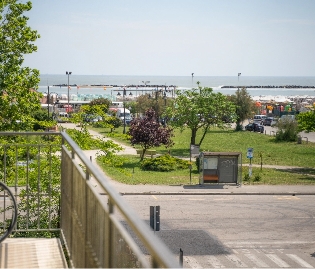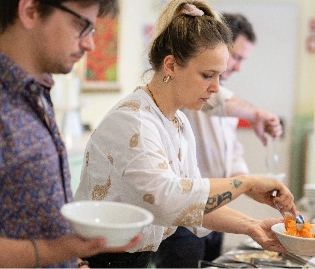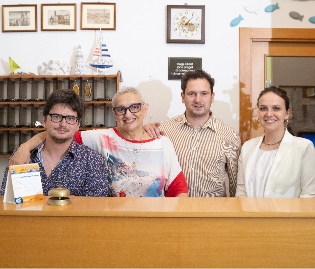Magical hinterland
History, villages and enchanting scenery
Not only sea and fun: Romagna also offers many historical, archaeological and naturalistic treasures. Its hinterland offers romantic villages, breathtaking views and impressive fortresses, palaces and castles. History and art are carved into every alley, street and square.
Cesenatico
Picturesque town on the Adriatic
Did you know that even Leonardo da Vinci passed through Cesenatico? The port was designed by him and bears his name. Along the canal you can also visit the House-museum of the poet Marino Moretti, the old fish market from 1911 and the Maritime Museumthe only one in Italy to have a land section and a floating section.
But we are also a green city with parks and trails where you can do many sporting activities or even just a simple walk surrounded by greenery.
Ravenna
The city of mosaics
Known for its colourful mosaics, is the most historically important city in Romagna.
The complex of early Christian monuments is considered Unesco Heritage and among them are the Basilica of Sant'Apollinare in Classe, the Mausoleum of Theodoric, the Basilica of San Vitale and the Baptistery of the Arians.
The Ravenna area also includes natural areas such as the Classe Pinewood and archaeological sites such as the Classe Archaeological Park.
San Marino
The oldest Republic
The Republic of San Marino is one of the oldest and smallest states in the world. The historic centre offers ancient alleys, walls, towers and very picturesque views, interspersed with many shops, restaurants and bars.
All shopaholics will be able to get lost among the boutiques and the large open-air outlet, but also among the many craft shops in the streets of the centre offering typical products and souvenirs of all kinds.
Santarcangelo
The most authentic Romagna
Santarcangelo is an ancient mediaeval village that, thanks to its small squares, alleys and historical buildings, has the title of City of Art.
Fascinating and mysterious, it is famous for its restaurants and clubs where you can enjoy wine and good food, surrounded by the magic of its alleyways.
Did you know that its underground is criss-crossed by a complex and mysterious system of caves and tunnels? An experience not to be missed during a visit!
Cesena
Memory of the World
Cesena is an important art destination that became a lordship with the Malatesta family and reached its peak with the establishment of the Malatesta Library, the first civic library in Italy and recognised 'Memory of the World' by Unesco.
Don't miss the Rocca Malatestiana, the thousand-year-old Benedictine Abbey of Santa Maria del Monte with its Basilica of the same name, and the old town centre with Piazza del Popolo, characterised by the Masini Fountain.
3 generations of passion and love for your holiday.
are welcome in the hotel and on the beach

Reviews
Newsletter
Where we are
All our offers and promotions in advance just for you. Leave us your email, we take care of everything.




